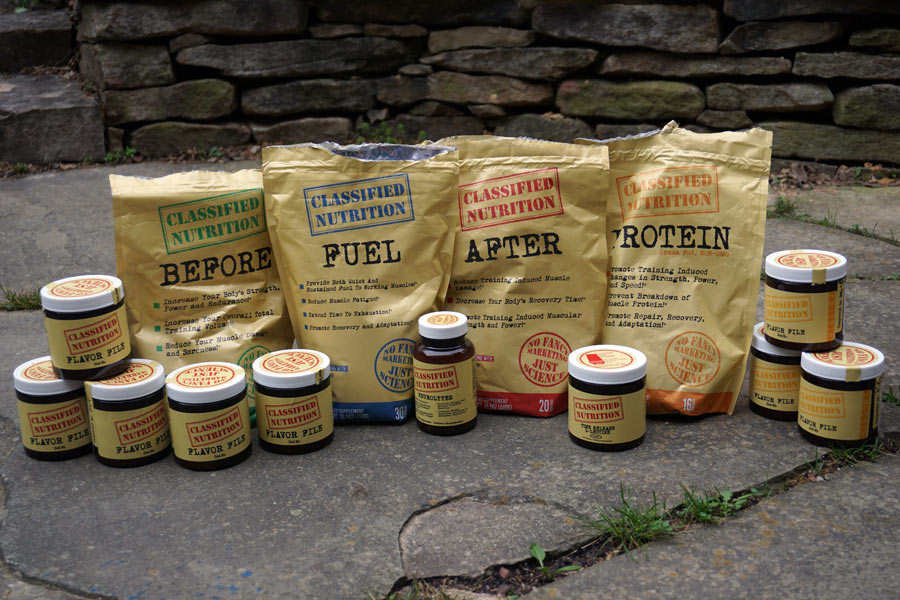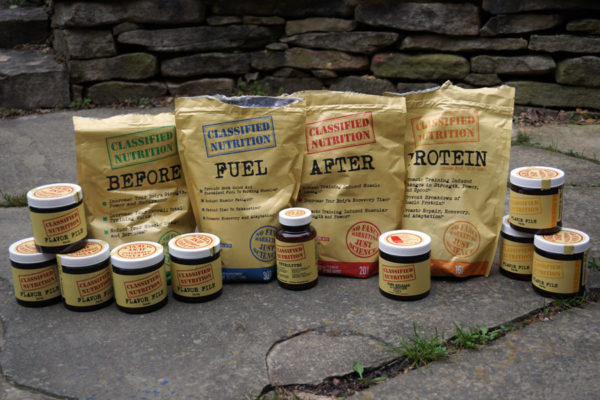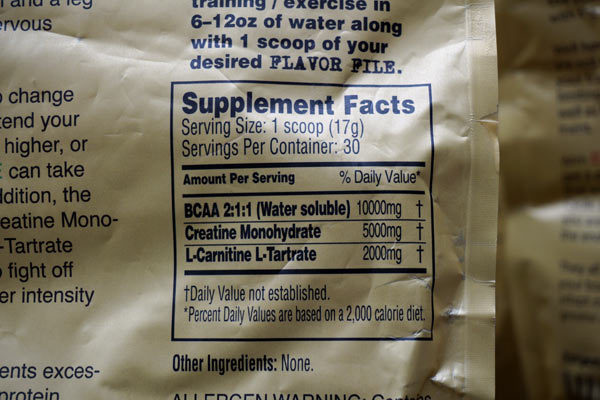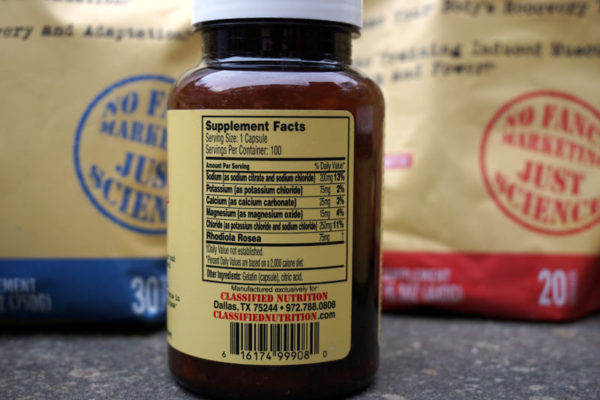There’s a lot of marketing hype behind supplements. Fortunately for us cyclists, things seem to be heading in the right direction, where simpler formulas and more whole-food ingredients seem to be getting more use. Compare that to the bodybuilding supplement market and we’re a bunch of clean eatin’ athletes. And it’s with that simplicity in mind that I sought out samples from Classified Nutrition. They break it down even further, shipping their before, during and after sport formulas without flavors or sweeteners, letting you choose from their options to give it the taste and intensity you like. It’s not a perfect system, but you don’t actually need to use any of the flavorings, either.
The other interesting facet is their ingredient selection, particularly for refueling during exercise, and their almost-no-calorie recovery option.
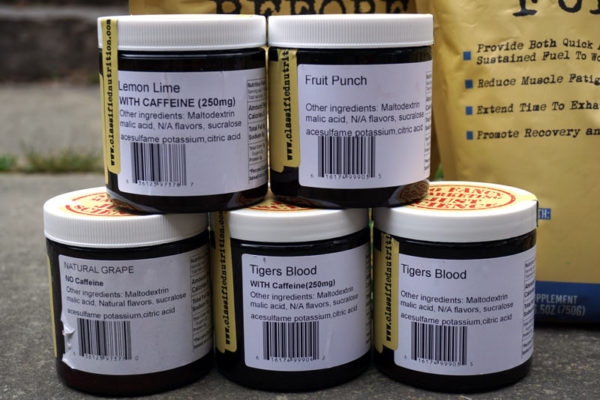
Jeff Randoll is the head of the company, which private label manufacturers nutrition products for a lot of other folks and says he sees that many times there’s a lot more effort put into the marketing than the product itself. His business partner, Kevin Kuhn, M.S.Ed./CSCS/MFS, makes sure the Classified products are based on science, and the labeling and branding is clearly relying on that.
The big differentiating factor is that all of their products are unflavored and uncaffeinated. They offer “Flavor Files” that all come in regular and caffeinated so you can choose and adjust the levels of each from ride to ride, workout to workout. Or, go without flavor if you want to keep it totally clean (the flavors use sucralose and acesulfame-potassium as a sweetener), or use whatever else you want to flavor it (Kool-Aid packets, etc.).
The “Before” product avoids the usual load of stimulants and instead goes with ingredients that are simply there to support muscle strength and function. We’re familiar with how BCAA’s prevent muscle wasting during endurance exercise, and creatine helps strengthen contractions. It’s the L-Carnitine-L-Tartrate that’s the newcomer here, and it’s included to help boost recovery from intense training efforts.
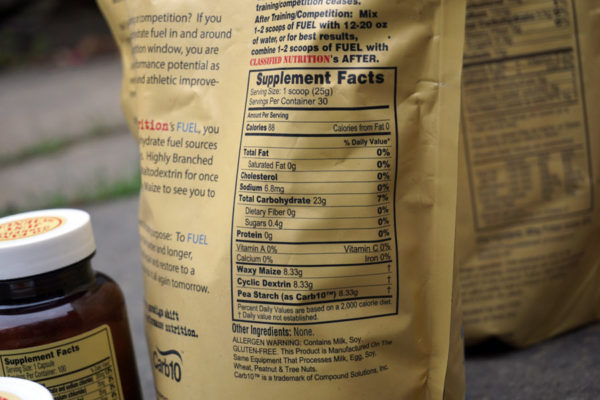
For the FUEL “during” drink mix, they used Waxy Maize, Cyclic Dextrin and Pea Starch rather than the usual sucrose/glucose/fructose/maltodextrin. Jeff says a single carbs can only absorb about 60g/hour, but a varied source ups that to about 90g/hour, which means more energy density. And, their carbs come from sources that don’t spike insulin and aren’t recognized as food, so they don’t divert blood from working muscles into the digestive system. Jeff says it’s about how gastric emptying works and starts getting super geeky on the physiology, but that’s what they say keeps you going with a constant stream of easy burning fuel. Nutshell: Cyclic Dextrin has a similar glucose molecule count as maltodextrin, but they’re bonded in a different way that allows them to quickly pass through the stomach (low osmality) and be broken down more slowly (sustained release, no insulin spike).
FUEL’s consistency is, um, different. It’s a little thicker than other sports drinks, and I needed to give the bottle a good shake before each swig to remix it. Which is fine, I’m in the habit of doing that anyway. What made the drink less convenient is the lack of electrolytes. For that, they offer Neurolytes, a bottle of pills that mix two sources of sodium (chloride and citrate) to smooth out delivery and combine them with the other electrolytes lost in sweat. Then they add Rhodiala Rosea, which studies have shown to reduce perceived exertion. Solid ingredients, but inconvenient to have to find a way to dose yourself with capsules throughout a ride or race. They are powdered caps, so you could just pull them open and dump into your drink, but I didn’t try that (yet) to see how it affects taste. Jeff says they formulated it this way so you could better control the amount of electrolytes you take in based on need, but I’d still prefer that they average it out and mix it in, leaving the capsules as additional support for heavy sweaters.
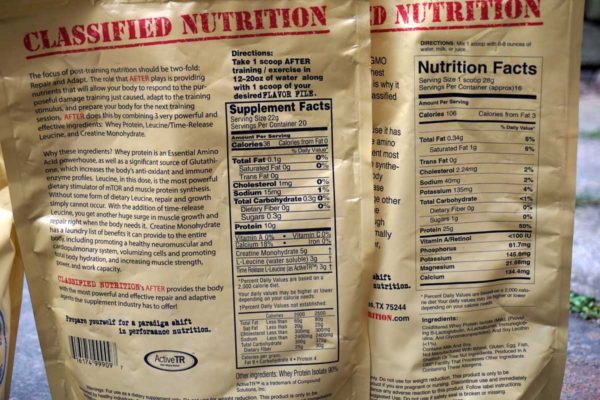
“What we saw was a lot of products that put an emphasis on the fuel aspect and ignoring the recovery,” said Jeff. “But the recovery is so important.”
The Leucine levels and types in the “AFTER” recovery product trigger muscle growth both immediately and then again about two hours later thanks to the time release L-Leucine. The whey protein isolate provides the building blocks for muscle, but also contains a very bioavailable source of Glutathione, which helps boost the immune system and keep athletes healthy during intense training periods.
They also offer a standalone time release L-Leucine that can be taken before bed to trigger muscle growth while sleeping without having to down a protein shake right before bed. It can also be used before longer rides to prevent catabolism of muscle and jump start the recovery process. Having read the research on another recovery product that mentions rate limiting amino acids, I asked Kevin to expand on that subject and explain how a standalone serving of Leucine absent any other aminos could boost muscle growth. Here’s multi-faceted response, unedited:
The story with the essential amino acids is that if you mega-dose with any one of them or don’t ingest enough of any one of them, you can reduce the ability of others to do their job (rate limiting); however, this is not really the case with the branched chain amino acids and exercise.
Here’s the sciency version: During exercise, there is a dramatic increase in BCAA (Leucine, Isoleucine, and Valine) oxidation as well as an increase in muscle protein degradation and decrease in muscle protein synthesis, resulting in an overall catabolic (breakdown) state. The decrease in muscle protein synthesis is directly related to the reduction of leucine due to BCAA oxidation. In order to reverse the overall catabolic state and stimulate an anabolic state (repair, recovery, and growth), the concentration of leucine has to increase above a specific threshold. This is done by eating protein or supplementing with amino acids.
The practical version: Exercise causes a reduction in the levels of Leucine, so the body goes into a catabolic state. Ingesting leucine before and during exercise limits the severity of the catabolic state, and ingesting leucine after training stimulates the synthesis of new muscle protein. In order for leucine to work the most effectively, you need to be in caloric maintenance or caloric surplus because it’s role is closely tied to insulin signaling. It will still work to promote repair and recovery in a state of caloric deficit, though not as effectively. It is the most effective when all the essential aminos are consumed with it OR if one is eating enough protein to maintain the amino acid pool. If you have a decent diet, Leucine as a stand-alone will do exactly what it is designed to do, stimulate repair, recovery, and growth.
When it comes to “rate limiting amino acids,” the issue is typically related to total protein in the diet (not enough), or the type of protein (plant vs animal source). It all comes down to “protein quality.” Animal based proteins are considered higher quality because they have a more robust amino acid profile. Plant based protein typically has a lower concentration of Leucine and Lysine, which can limit the rate of muscle protein synthesis, and thus limit repair, recovery, and adaptation.
So, for it to really work, you’ll still want to make sure you’re consuming enough protein throughout the day. I found that it was an easy way to cover night time recovery without adding all the calories of a full protein shake before bed, which I believe led me to be the leanest I’d been in years (consistently <10% body fat for months).
One last note on the TR Leucine powder: It’s super fluffy and light and absolutely will not stir into water. You’ll need to shake it vigorously to dissolve, and you’ll want to add some flavor…it’s bitter and gross tasting. But it works.
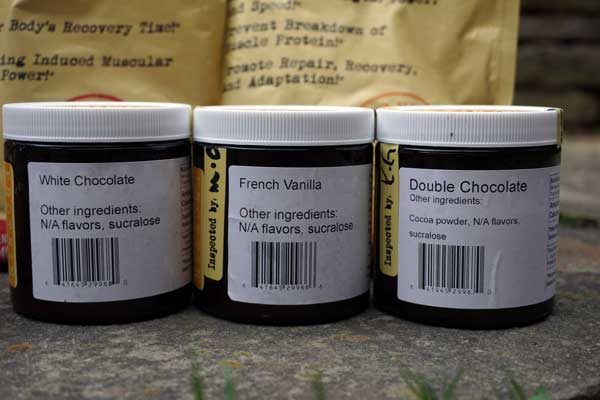
The highlights for me are the exceptional functional ingredients -everything they make includes a full, effective dose, not some trivial amount just so they can put it on the label- and that you can adjust the flavor to your liking. It’d be nice to see the electrolytes mixed into the “During” sports drink mix, and for them to use natural sweeteners instead of artificial ones, but other than that I’d highly recommend the products. All worked as advertised, at least as well as I could tell without doing blood tests, and the customizability is cool. If you want to geek out on more of the science, check out their blog.
